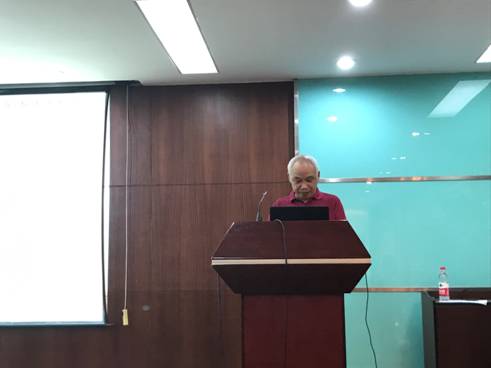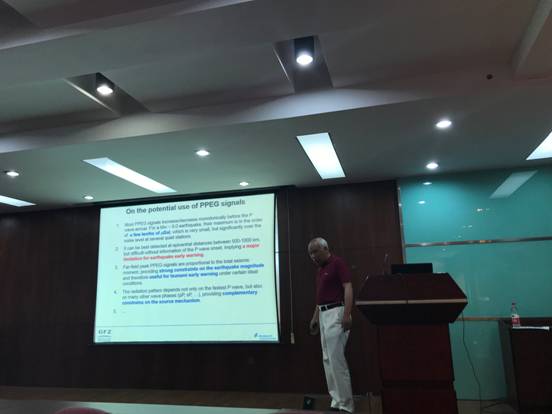In the morning of July 9th, at the invitation of Dean Xiong Xiong of of the Institute of Geophysics and Geomatics, Wang Rongjiang, a well-known international seismologist and geodesy, from the Helmholtz-Centre Potsdam-German Research Centre for Geosciences (GFZ), visited our college and made an academic report entitled "Pre-P-wave elasto-gravitational signals and their potential use in modern sismology". More than 30 teachers and students attended the lecture.
Researcher Wang Rongjiang first introduced the phenomena of elastic-gravity signals (PPEG) that can be received earlier than P waves by large and medium-distance seismic stations, and detailed the mechanism, research status and existing problems. Then, taking the 2011 Mw9.1 Tohoku earthquake in Japan as an example, the report showed the Tohoku earthquake PPEG recorded at the remote earthquake stations Beijing Station and Mudanjiang Station. The report further showed that through the theoretical simulation method developed by himself, a more stable and consistent theoretical PPEG can be obtained, and based on the observed PPEG and the developed theoretical simulation method, the obtained Tohoku earthquake magnitude and CMT obtained from seismic waves are inverted. The magnitudes are very similar. And this has demonstrated the authenticity of the existence of this signal and the reliability of the theoretical simulation method. Finally, researcher Wang pointd out the potential application prospects of PPEG in earthquake early warning and other fields.
In the discussion session after the report, researcher Wang Rongjiang had an in-depth exchange with the teachers and students present on the front-line hot issues related to PPEG, and made a prospective explanation of related research work. He encouraged students to pay more attention to the basic links and be brave in scientific research and put ideas into practice.



